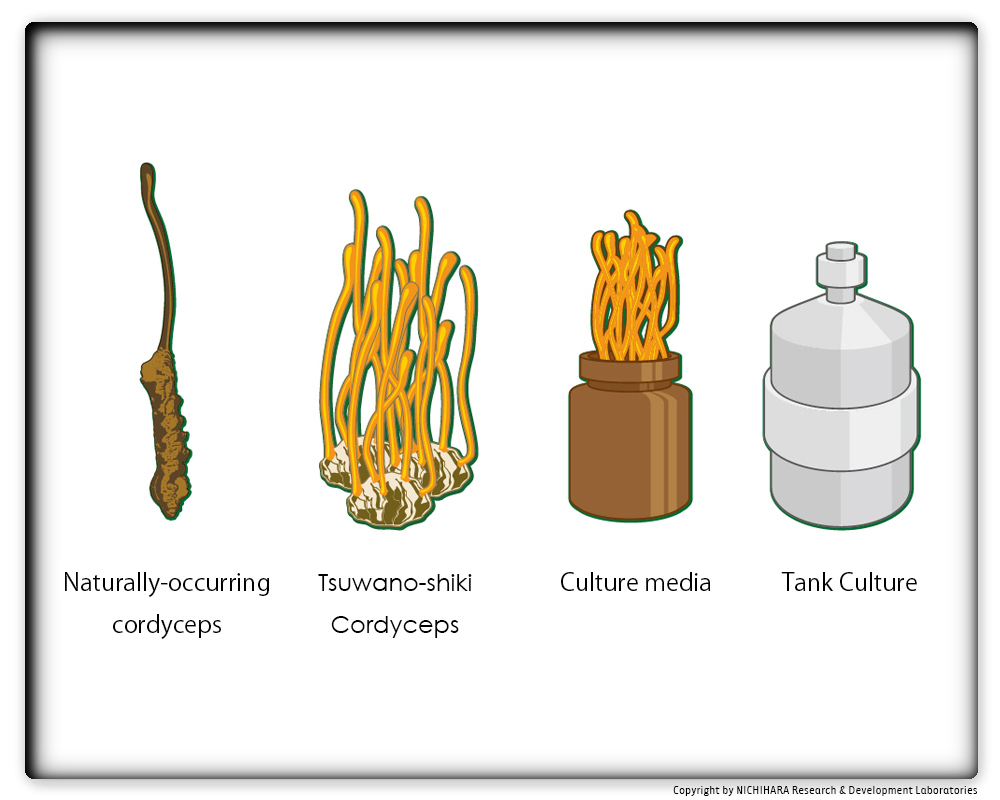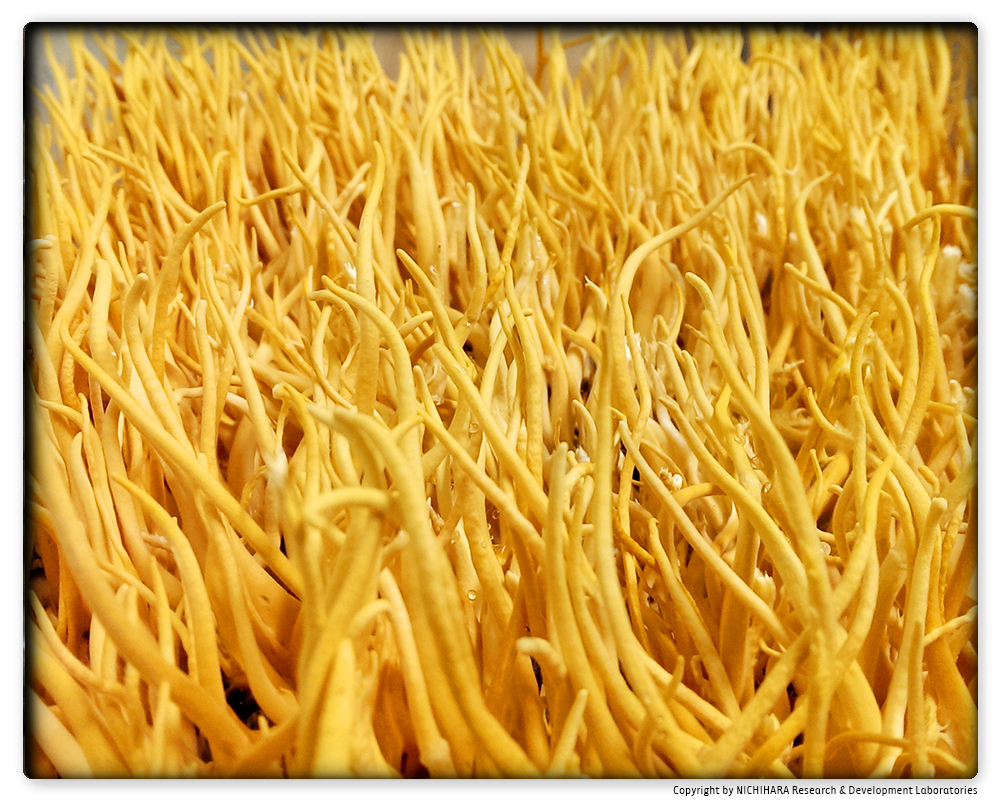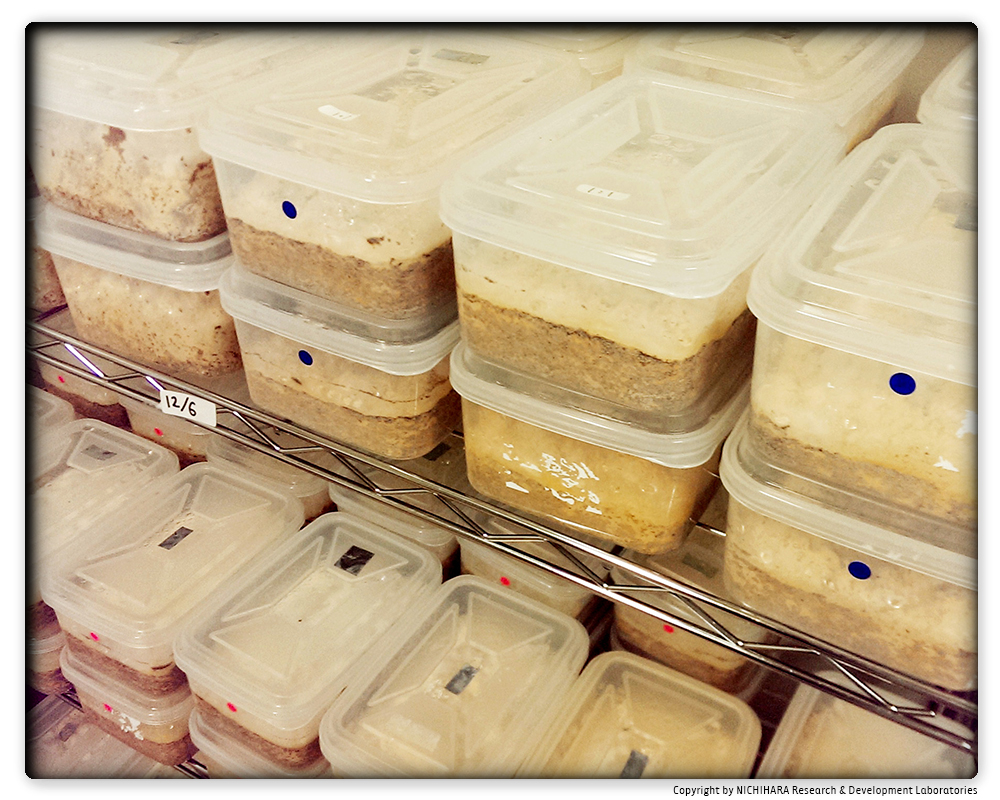
Cordyceps types
Cordyceps is widely used as a dried food, or crude drug ingredient for Kampo preparations or a health food. It can be classified into several types based on how it is grown.
Naturally-occurring cordyceps
Naturally-occurring Cordyceps is a type of mushroom called Cordyceps sinensis which grows on the larvae of ghost moths in Tibet. In countries where oriental medicine is still widely accepted such as Taiwan and China, this naturally occurring cordyceps is the only type that can be called Tochukaso, and it is written using ancient characters. All man-made cultured forms are called Chuso. At our site, we do not necessarily differentiate between these two types and we refer to all of these as cordyceps).
Tsuwano-shiki Cordyceps
In naturally occurring cordyceps, a live insect is infected with the fungus. Tsuwano-cho in Shimane Prefecture focused on this inoculation process where live silkworm pupae are infected to culture cordyceps and Tsuwano patented this methodology. Nichihara Research and Development Laboratories, Inc. licensed this methodology from Tsuwano-cho and we culture Tsuwano-shiki cordyceps and sell it as a brand.
Culture media
Just as the culinary fungi such as Hen of the Woods (Grifola Frondosa) and King Oyster (Pleurotus eryngii) are produced in mushroom factories, tochukaso is also cultured in artificial media. These artificial culture media are made of brown rice yeast and beer yeast. At Nichihara, the only media we use are frozen or dried silkworm larvae, and the tochukaso we provide will always be made from insect proteins.
Tank Culture
Using a liquid medium, cordyceps militaris is grown in a liquid medium. With this method, large amounts can be produced at low cost. However, at Nichihara Laboratories, we firmly believe the process is important, of allowing the fungus to parasitize insects, and grow from insect proteins to form the fruiting body. Therefore, we do not engage in tank culturing of Tochukaso.




